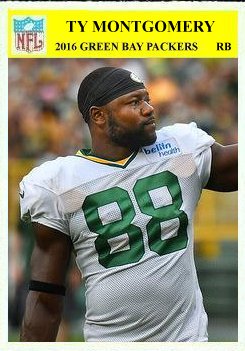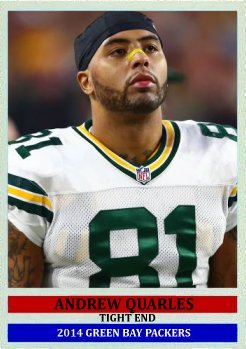

In Mike McCarthy’s last winning season in Green Bay, the Packers rebounded to fourth in the league in scoring from 15th with 432 points. Unfortunately, the defense slipped from 12th to 21st in points allowed with 388. A four-game losing streak at midseason dropped the Pack to 4-6, but the team recovered to win its last six regular season games to finish at 10-6, first in the Central Division. They were 6-2 at home and 4-4 on the road. They were 5-4 against winning teams, 1-2 versus .500 ones and 4-0 against losers.
In the postseason, the dream of running the table lived on. Green Bay smacked down the Giants 38-13 on four TD passes by Rodgers, including a 42-yarder to Randall Cobb to close the half. They then outlasted the top seeded Cowboys 34-31 in a game that was tied at 28 and then 31 with a remarkable series of field goals. Mason Crosby hit a 56 yarder at 1:33; Dan Bailey of Dallas matched with a 52 yarder with 35 seconds remaining; then Rodgers hit Jared Cook with a 36-yard laser on third down to set up Crosby’s 51-yard game-winner on the final play of the game. A week later, though, the Packers were outclassed by second-seeded Atlanta, losing 44-21 after training 24-0 at the half.
Rodgers started all 16 games and completed 65.7% of his passes for 4,428 yards, forty touchdowns and seven interceptions. He averaged 7.3 yards per pass and recorded a 104.2 passer rating. Brett Hundley completed two of ten passes for 17 yards and an interception.
After Eddie Lacy went on injured reserve with 360 yards rushing, McCarthy improvised and stuck Ty Montgomery in the backfield where he led the team with 457 yards rushing, 5.9 a clip. Rodgers added 369 yards on the ground.
Jordy Nelson returned from his ACL injury of 2015 and caught 97 passes for 1,257 yards and 14 touchdowns. He was the NFL Comeback Player of the Year, but his yards per catch dropped 2.5 yards to 13 in a bad omen. Davante Adams matured and caught 75 passes for 997 yards and 12 scores, while Randall Cobb added 60 catches and four scores. Tight ends Jared Cook and Richard Rodgers each grabbed 30 balls. Mason Crosby led the team with 122 points
On defense, Ha Ha Clinton-Dix nabbed five interceptions. Nick Perry recorded 11 sacks, Julius Peppers 7.5 and Clay Matthews, now playing more inside linebacker, five. Rodgers, Dix, TJ Lang and David Bakhtiari were selected for the Pro Bowl, while Bakhtiari and Dix were each named second team All-Pro. Kenny Clark was the top rookie, but third rounder Kyler Fackrell and fourth rounders Dean Lowry and Blake Martinez were serviceable players.
Finally, the Hall of Fame welcomed Brett Favre and one-time Packer assistant coach Kevin Greene.




















Custom cards in 1966 Philadelphia style.











































































